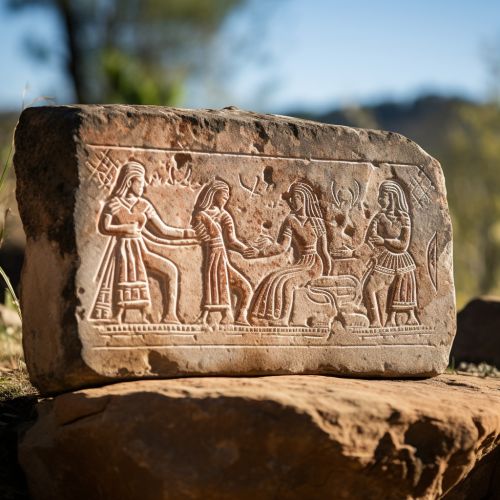Etruscan language
Introduction
The Etruscan language was the spoken and written language of the Etruscan civilization, which existed in the ancient region of Etruria (modern Tuscany, western Umbria, and northern Lazio in Italy) from about the 8th century BC to the 3rd century AD. The language is unique in the sense that it does not belong to any known language family, making it an isolated language.


History
The earliest known examples of the Etruscan language are found in inscriptions dating back to the 8th century BC. These inscriptions, found on pottery and metal objects, provide the first glimpse into this ancient language. The Etruscan language continued to be used until the 1st century AD, when it was gradually replaced by Latin as the dominant language in the region.
Characteristics
The Etruscan language is characterized by its unique alphabet, which was adapted from the Greek alphabet around the 8th century BC. The Etruscan alphabet consisted of 26 letters, four of which were unique to the language. The Etruscan language was written from right to left, and sometimes boustrophedon (alternating right-to-left and left-to-right).
Vocabulary
The vocabulary of the Etruscan language is largely unknown due to the limited number of surviving texts. However, some words have been deciphered from inscriptions and texts, providing a glimpse into the language's vocabulary. Many of these words are related to religion, politics, and social structures, reflecting the cultural and societal aspects of the Etruscan civilization.
Grammar
The grammar of the Etruscan language is complex and not fully understood. It appears to have been an agglutinative language, with words formed by the combination of several morphemes. The language also seems to have had a complex system of verb tenses and moods, as well as a rich system of noun declensions.
Decipherment
The decipherment of the Etruscan language has been a challenging task for linguists and historians. The primary source of information for the language is the Etruscan texts, which include inscriptions on pottery, metal objects, and tomb walls, as well as a few longer texts. The most significant of these is the Liber Linteus, a linen book that is the longest known Etruscan text.
Legacy
Despite its extinction, the Etruscan language has left a significant legacy. It influenced the development of the Latin alphabet and had a significant impact on the Latin language itself. Moreover, the study of the Etruscan language provides valuable insights into the culture and society of the Etruscan civilization.
